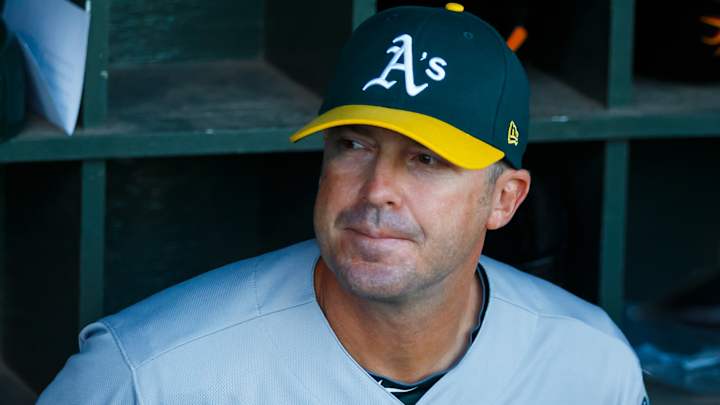Athletics Bench Coach Christenson Sees Open Questions About a Potential Spring Training II

It’s been almost two decades since Ryan Christenson has spent a summer in Arizona.
The global COVID-19 coronavirus pandemic that has shut baseball down has Christenson, the Oakland A’s bench coach, learning this week that one plan to restart baseball would call for the games to resume with all 30 Major League teams playing in Arizona.
The targeted resumption date would be June, when Phoenix’s Valley of the Sun traditionally averages a 106-degree temperature.
Hearing that there is even consideration of a plan to bring baseball back is good news. Doing it all in Phoenix in peak heat, a little less so.
On June 19, 2001, Christenson, then a borderline outfielder in the middle of a six-year career, was traded by the A’s to Arizona, and he spent the rest of the season “on the shuttle between (Triple-A) Tucson and Phoenix,” he remembers. “And it was hot.”
“I don’t think it would be that bad if baseball’s return was in May,” Christenson said, then cautioning, “It really heats up in June. It starts getting real hot, real quick.”
Still, Christenson said Wednesday from his house in Phoenix, “the fact that it’s going to be warm if it happens is the least of our problems.”
“I’m just like everybody else,” he said. “Staying home and waiting. The first thing we need is the good news that this thing is slowing down. Once we get that kind of good news, then looking at these other scenarios.”
Christenson doesn’t go out much except to ride bicycles around the neighborhood with daughters Cameron, 7, and Cassidy, 17.
The idea hashed out between MLB owners and the players’ association would, if medical authorities give the go-ahead for baseball’s return, call for a second spring training camp with players having missed 6-8 weeks of work. And in the overview provided by ESPN’s Jeff Passan, that really isn’t addressed.
As Christenson points out, having 30 teams playing one game a day in Arizona baseball facilities is one thing. There are 10 Cactus League stadiums and enough other sites between the Diamondbacks’ Chase Field and a number of collegiate and junior college fields could be put together to give MLB the needed 15 separate stadiums.
But spring training is something else again. Each team needs its own facility to do its work. It won’t just be 28 or 29 or however many players MLB decides can start the season on a roster who need to train.
“You’re going to need more than 20 pitchers, maybe closer to 30 to start out,” Christenson said. “You’ll be starting from scratch. And you’re going to need the starting pitchers, especially, to build up. An inning or two the first game, then building up from there.
“There aren’t going to be any fans there, so maybe you don’t need to have full games. Maybe simulated games would be better. You don’t want (starter) Mike Fiers to throw 30 or 40 pitches all in one inning. It would be better to have him throw 20, shut it down, then come back and throw another 20 the next inning to get to his limit.”
And if that’s the case, the A’s and all other teams would need a group of extra pitchers to get through that first week or 10 days of games to keep the prime pitching from getting burned out.
“You want to give the starting pitchers the benefit of the doubt,” Christenson said. “You want them to get in the work the pitching coach thinks they need and the number of pitches needed and not more as they build up.”
That will be discussed by teams as the time for reopening baseball nears, assuming it does. For now. Christenson, manager Bob Melvin, the coaching staff and members of the front office keep in touch with a series of mass texts.
“We have text chains on a weekly basis,” Christenson said. “As far as planning anything out, there isn’t any sense to make plans. Once they give us the sign, there will be plenty of time to put together a plan.
“And when we have a concrete date, I think we as a team are going to be in good shape. This is a resourceful group. If any team is going to come out on the other side of this in a good place, this is that team. The mentality of this group is good. We have great guys.”
